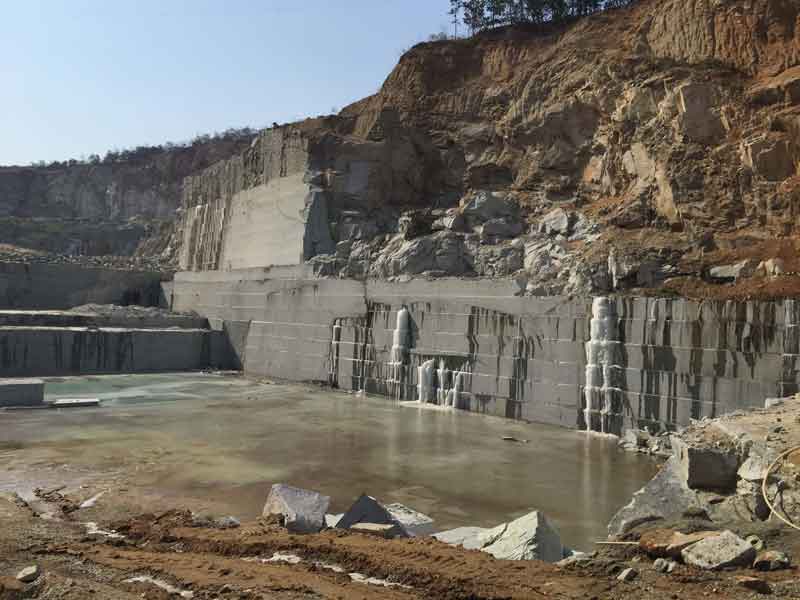Uncovering the Rich Background and Lasting Practices of Granite Quarrying
As we depend on the precipice of discovering the intricate tapestry of granite quarrying, a journey with time reveals not simply the physical act of removing stone yet likewise the social and historic relevance woven right into the extremely fabric of this practice. From the ancient origins that laid the foundation for contemporary quarrying strategies to the sustainable techniques that are forming the future of this industry, each sculpt mark on granite surface areas narrates waiting to be unearthed (granite quarries in south africa). The legacy of granite quarrying extends far past mere removal; it is a testament to human resourcefulness, resilience, and the long-lasting allure of this majestic stone
Old Beginnings of Granite Quarrying
Dating back to ancient human beings, the technique of quarrying granite has been an important component of human history and architectural innovation. The earliest proof of granite quarrying days back to old Egypt, where large pyramids and intricate sculptures were crafted from this resilient stone. The Egyptians used primitive devices to draw out granite blocks from quarries, showcasing the value of this product in their huge building and constructions.
Moving on in history, the Greeks likewise made considerable contributions to the quarrying of granite. The Greeks utilized granite in different building wonders, such as holy places and statues, demonstrating their skill in shaping and sculpting this sturdy rock. The Romans even more fine-tuned the methods of quarrying granite, utilizing innovative devices like knives and hammers to extract and form granite for their legendary frameworks.
Via the centuries, the method of quarrying granite has actually developed, with contemporary technologies improving efficiency while maintaining the classic allure of this all-natural stone - granite quarries in south africa. From ancient people to modern building contractors, the heritage of granite quarrying remains to shape our world
Evolution of Quarrying Techniques
The advancement of quarrying strategies has actually been marked by a constant progression towards better effectiveness and accuracy in extracting granite. Early quarrying strategies involved hands-on labor with standard tools such as blades, hammers, and wedges to remove granite blocks from the earth.
In even more recent times, the development of equipment reinvented the quarrying market, allowing much faster extraction rates and boosted productivity. Technologies such as ruby wire saws, high-pressure water jets, and pneumatic drills have actually become typical in contemporary quarries, enabling accurate cutting and minimized waste. Furthermore, developments in computer-controlled devices and 3D modeling have actually enhanced quarrying operations, bring about marginal environmental impact and enhanced sustainability techniques. As the demand for granite continues to increase, the advancement of quarrying strategies remains essential to meeting market needs successfully and sustainably.
Cultural Significance of Granite
Granite holds a profound cultural relevance across different worlds because of its enduring presence in architectural work of arts and revered monuments. From the magnificent pyramids of Egypt to the intricate makings of the Angkor Wat holy place in Cambodia, granite has been a product of option for expressing grandeur and long life in social heritage. In ancient Rome, granite columns embellished temples and public buildings, symbolizing strength and permanence. The social significance of granite extends past its physical qualities; it embodies durability, stability, and eternity, making it an icon of sustaining heritages and customs.

Sustainable Practices in Quarrying
In the middle of the rich background of granite quarrying and its cultural relevance lies an expanding emphasis on sustainable practices within the market. As environmental awareness and issues concerning resource deficiency have enhanced worldwide, the quarrying field has increasingly welcomed lasting approaches to reduce its influence on the setting and surrounding neighborhoods.

In addition, reclamation and rehabilitation of quarry sites post-extraction are important to sustainable practices. By bring back quarried locations to a natural or helpful state, such as producing wild animals habitats or entertainment spaces, quarriers can offset the environmental impact of their procedures and add positively to the regional ecosystem.
Tradition of Granite Quarrying
With a historical backdrop steeped in workmanship and industrial progress, what enduring impact has granite quarrying left on the landscape of modern society? The legacy of granite quarrying transcends plain extraction anchor practices; it has shaped architectural wonders, urban landscapes, and cultural heritage worldwide. The durable nature of granite has actually made it a preferred choice for monoliths, structures, and infrastructure, standing as a testimony to the ability and artistry of quarry workers across generations.
In addition, the financial impact of granite quarrying can not be forgotten. The market remains to offer employment possibility and drive regional economic situations in areas where granite removal is prevalent. It has also spurred technical improvements in quarrying techniques and tools, bring about a lot more reliable and lasting methods.
In terms of sustainability, the heritage of granite quarrying consists of initiatives to reduce environmental influences with reclamation projects and accountable source administration. By stabilizing economic interests with environmental stewardship, the sector aims to make certain that future generations can remain to benefit from this long-lasting natural deposit.
Final Thought

Comments on “A Trip Through Granite Quarries in South Africa: Unveiling Nature's Virtuosity”